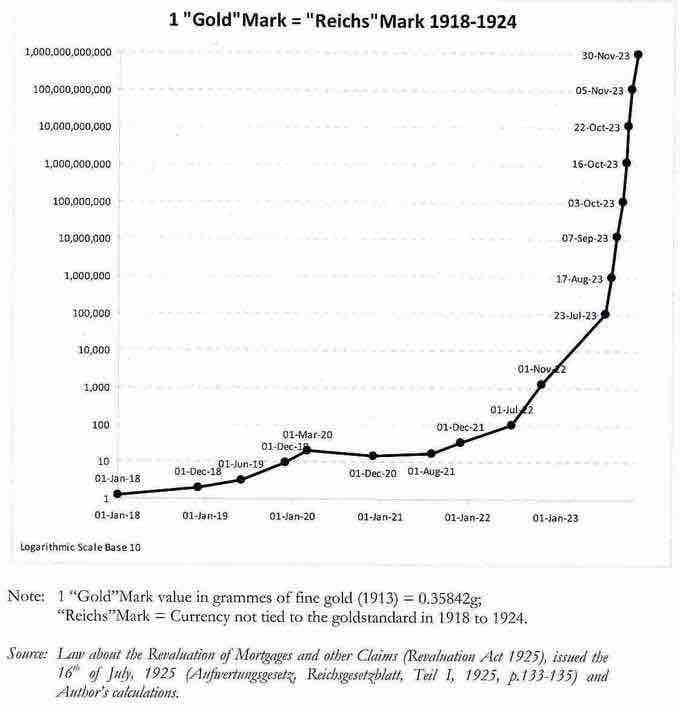Inflation's Impact on Financial Statements
In most countries, primary financial statements are prepared on the historical cost basis of accounting without regard either to changes in the general level of prices. Accountants in the United Kingdom and the United States have discussed the effect of inflation on financial statements since the early 1900s .

Hyperinflation Graph
German Hyperinflation Data
General price level changes in financial reporting creates distortions in financial statements such as:
- Many of the historical numbers appearing on financial statements are not economically relevant because prices have changed since they were incurred.
- Since the numbers on financial statements represent dollars expended at different points of time and, in turn, embody different amounts of purchasing power, they are simply not additive. Hence, adding cash of $10,000 held on December 31, 2002, with $10,000 representing the cost of land acquired in 1955 (when the price level was significantly lower) is a dubious operation because of the significantly different amount of purchasing power represented by the two identical numbers.
- Reported profits may exceed the earnings that could be distributed to shareholders without impairing the company's ongoing operations.
- The asset values for inventory, equipment and plant do not reflect their economic value to the business.
- Future earnings are not easily projected from historical earnings.
- The impact of price changes on monetary assets and liabilities is not clear.
- Future capital needs are difficult to forecast and may lead to increased leverage, which increases the risk to the business.
- When real economic performance is distorted, these distortions lead to social and political consequenses that damage businesses (examples: poor tax policies and public misconceptions regarding corporate behavior).
Inflation accounting, a range of accounting systems designed to correct problems arising from historical cost accounting in the presence of inflation, is a solution to these problems. This type of accounting is used in countries experiencing high inflation or hyperinflation. For example, in countries such as these the International Accounting Standards Board requires corporate financial statements to be adjusted for changes in purchasing power using a price index.